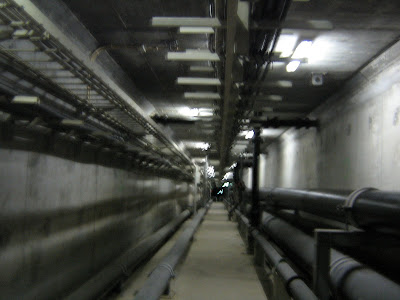José Saraiva Mendes (J.S.M.), President of the ITU MBG – Management and Budget Group (and former President of the ITU Council), speaks about his present ITU challenges and of his work leading this group, that aims to create a Commission with the mission to assist the Council in the restructuring of the ITU.
[Interview conducted by Ilda Matos; edited by Ilda Matos and Carlos Costa]
Which work are you presently doing at the ITU?
J.S.M:The ITU has a very complicated budget problem. For many years, the revenues generated from expos and fairs, in conjunction with the resources applied in funds, helped this organisation’s bills, but their decreasing importance, since the nineties, highlighted even more the budgetary problem.
Hence, some measures were needed to solve this situation and in Marrakech, in 2002, the Plenipotenciary Conference determined the Council to analise ITU’s managerial processes with a view to a revision. That is when I came in. It was my task, then as President of the Council, to put in practice the decision to revise ITU’s managerial processes which has a heavy and expensive structure.
How many persons work for the ITU?
J.S.M: In round figures, the ITU has 1.000 workers. The process revision concluded that this structure was over dimensioned, so we designed a financial plan with a view to restructuring the organisation and cutting personnel, paying a compensation to the people who volunteered to join the plan.
Were the proposed cuts essentially related with the personnel?
J.S.M: Essentially. The idea was to maintain ITU’s functions, but with less personnel. In three or four years equilibrium would have been reached. But that was not possible, due to several reasons.
Meanwhile, a new Secretary-General was elected and he wants to make things better. In Antalya, in 2006, it was established that I must help to create a Commission that with the new Secretary-General would continue the restructuring. What I am doing now is to create the Commission, to define how it works, how the meetings should be handled, what is the working methodology, who should participate, etc. All this work is going to be presented to the Council in September and from that moment on the Commission should start its workings.
With the background that you have mentioned, are you optimistic with the future of the Commission?
J.S.M: Not really, unless the Member-States decide to go ahead with the indispensable measures. But, there is an important aspect: The Secretary-General considers this Commission very important, because it can complement, with a series of initiatives, the work of the Council, which meets once a year.
Will the work of the Commission allow the ITU to be financially balanced? How?
J.S.M: The intervention of Portugal with a special commitment since Marrakech contributed to a significant ITU management progress. During my Presidency of the Council, the work which was developed resulted in the introduction of a cost accounting system and of a budgetary model based on results.
But there is still a lot of work to be done to take full benefit of these tools and to revert the situation. The Secretary-General has made efforts to obtain resources from several countries and from the industry, to see if it is possible to balance the budget. He has also proposed the reduction of the number of Directions.
In this context, the role of the Commission will be to verify the managerial rules that are in use and to check whether those fit the ends the targets that are aimed at. The Commission will verify as well the budget execution. Taking into account what was referred, the Commission has to provide recommendations to the Secretary-General.
Is the internal restructuring ITU’s main priority?
J.S.M: Yes. The work that I have been doing has already identified problems and solutions and we have some tools to begin controlling the situation. This work will be continued in the Commission to be created.
Apart the internal restructuring, which is the main priority, what are the main challenges that the ITU is confronted with?
J.S.M: Essentially, the enlargement of its attributions, namely at the level of the role that it is going to have in the Information Society, which is a very complex reality. In this context, the internet management, which is ensured today by a private institute (ICCAN) founded based on the legislation of the USA State of California, should be underlined. There are doubts if this function should not be preferably ensured by a more general institution, such as, for instance, the ITU.
How do you see the articulation of ITU with other entities, outside the United Nations System?
J.S.M: For me, it is useful that there are contacts between these entities, because we are dealing with a complex reality. It is fundamental that the ITU cooperates with other organizations.
Does the existence of structures such as ITU, with high costs, make sense?
J.S.M: there is a very important aspect: It is the ITU that manages the spectrum at world level. This is the major justification for its existence (notwithstanding the approval of standards, the development of projects to reduce the Digital Divide between the developed and the developing countries and the preparation of telecoms expos).That does not mean, given the present balance between the different forces present in the ITU, that the field of intervention of ITU should be restricted to spectrum management. It does not mean either that it should be enlarged.
What future do you foresee for the ITU?
J.S.M: The ITU will have the same future as the United Nations System, which is the only international forum for discussing the real major problems. At the moment, there are no alternatives.
Are you available to continue your work at the ITU from September onwards, when the new Commission starts functioning?
J.S.M: Presently, I am not a candidate. It will depend of the dynamics that is generated.

 Photo: Eisenstein’s work at Strelnieku Iela
Photo: Eisenstein’s work at Strelnieku Iela
 Photo: Source Parque Expo, S.A.
Photo: Source Parque Expo, S.A.




